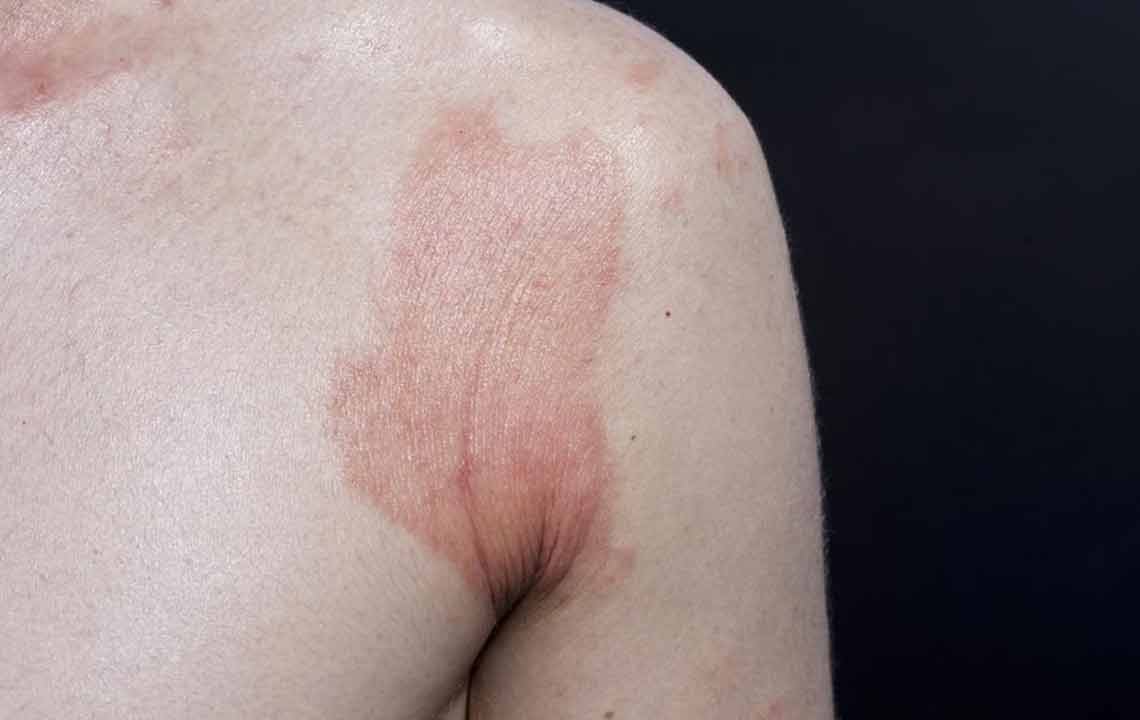How to identify a skin rash
A rash is a common term used to denote any visible abnormality of the skin including any discoloration or change in the texture of the skin. A rash is often a result of a reaction of the skin to an irritant and each type of a rash is caused by a reason .
Some of the common causes of a rash are:
- Chemicals in beauty, sanitary, and cleaning products like detergents, soaps, and creams
- Dyes and paints used in clothing
- Chemicals in rubber, latex, or elastic products
- Poisonous plants like poison oak, poison sumac, or poison ivy
- Medicines
- Insect bites like mosquitoes, ticks, and other bugs
- Underlying bacterial infections or diseases
Rashes can occur in a few minutes post the reaction or as a slow build up over a period of time .

Here are a few common rashes and how you can identify skin rash.
Contact Dermatitis – This is caused by contact with an irritant that is causing an allergy. The skin tends to appear red and burns or seems very itchy.
Insect bites – Most insect bites are identified by bumps where the insect has bit you. The bump will swell up and cause the surrounding skin to turn red. Insect bites like mosquito, ants and bed bugs often itch and cause pain as well. You need to visit a doctor if you have bites of spiders, Tse Tse flies or Fire Ants to rule out any further poisoning.
Fungal infection – Fungal infection rashes are some of the most common rashes. They are usually topical and caused by fungi. Vaginal yeast infection, ringworm, and fungal nail infection are often observed. These fungal infections have symptoms like itching, peeling, swelling and the cracking of the skin. The fungal infections require medical attention and won’t go away with normal washing and cleaning procedures.
Scabies – Scabies is caused by a species of mites and is an intense rash which itches and can lead to sores. The rashes are often found on wrists, elbows, armpits, waist, buttocks and the area between fingers. The rash appears as tiny red bumps and is essentially caused because the mite laid their eggs under the skin. It takes a while to notice the rash after the infestation. You will need immediate medical attention as it is contagious and spreads fast.
Hay fever – Hay fever is also known as allergic rhinitis. It is caused by allergies due to pollen and causes a widespread rash on the body like hives. The skin will turn bumpy and red, and over time also swell up. You need to take an allergy medication to get rid of this rash.
Measles – It is one of the most common communicable diseases and generally found in unvaccinated children. It is a respiratory disease, however, the biggest symptom is a widespread rash. The red and itchy bumps start at the head and start spreading all over the body. If this rash is accompanied by a runny nose, cough, fever, and white spots in the mouth then it could be measles. If you identify skin rash and have such symptoms, you need an immediate medical intervention.
Cutaneous Candidiasis – Candida fungus is a fungus that lives naturally in the body, however an increase in the fungi is harmful to the body. This disorder causes a rash to break out in the folds of the body like armpits, under breasts, groin area and in between fingers. It is often a result of tight clothing, folds in the body caused due to overweight and poor hygiene of the body. This is easily treated by working on these conditions and improving hygiene.
Eczema – Eczema is a severe skin disease and one of the symptoms is a skin rash. The skin becomes extremely flaky and dry and falls out. It generally affects the elbows, knees and the neck area. It causes intense itching and patients tend to scratch, leading to infections.
Shingles – It is a viral infection and brings a skin rash that causes intense pain and burning. The skin erupts in blisters on the neck, torso, or face. They often fill up with fluid and cause red patches on the skin. Medication is given to treat the infection and soon the rash will disappear.
If you identify skin rash that persists for a long time, consult your doctor immediately. The best way to avoid rashes is to maintain good body hygiene and have the habit of washing hands regularly. Hydration and moisturizing of the skin are also important as well as proper nutrition is required for a healthy and supple skin, which is free of rashes.

